Motorola Razr 50: Motorola stands out for its steady growth in several markets in a market struggling to find innovation to stave off a sales slump. It has done so by avoiding direct challenges to the strongest brands in the sector, especially those that dominate the top end of the market, and by taking a different route: less focus on top-of-the-range specifications, more attention to details that can evoke style to find an element of differentiation in a sector that is stingy with novelty. High-quality materials, important partnerships, bright colours and even a few clever marketing gimmicks (such as scented smartphone packaging) have enabled the brand, which passed under Lenovo‘s control in 2014, to begin a steady rise.
Motorola’s global upturn
The numbers speak for themselves: in Europe, Motorola was the fourth largest smartphone manufacturer in 2023, with 6.4 million units shipped (+34% compared to 4.7 million in 2022), for a market share that rose from 3% to 5%. In Italy, the increase was even more pronounced, reaching 12% of the market, while in the United States, foldable flip-phone style devices are very popular, which Motorola itself says are much more popular than their Samsung rivals. After the launch of the Edge 50 series, with the wooden body of the Ultra model, the company has revamped its foldable phones. With the Razr 50 Ultra launch and the Razr 50, Motorola has come full circle, paying homage to the Razr V3, which made mobile history 20 years after its launch.
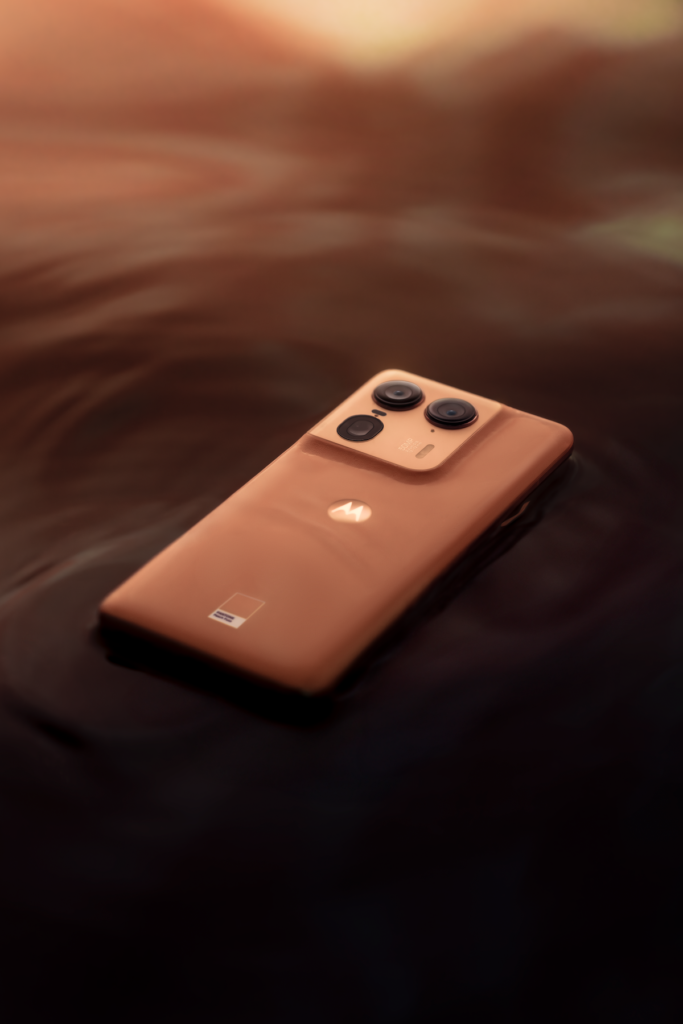

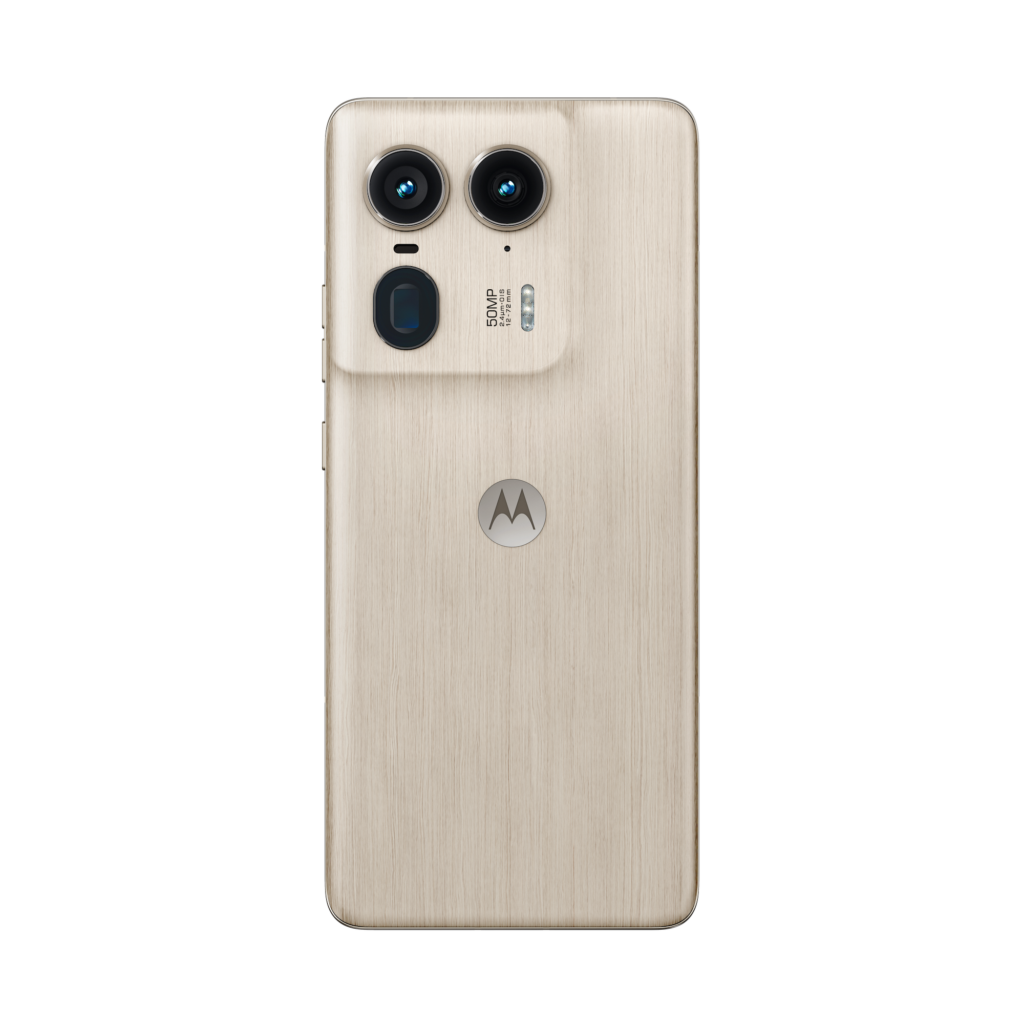
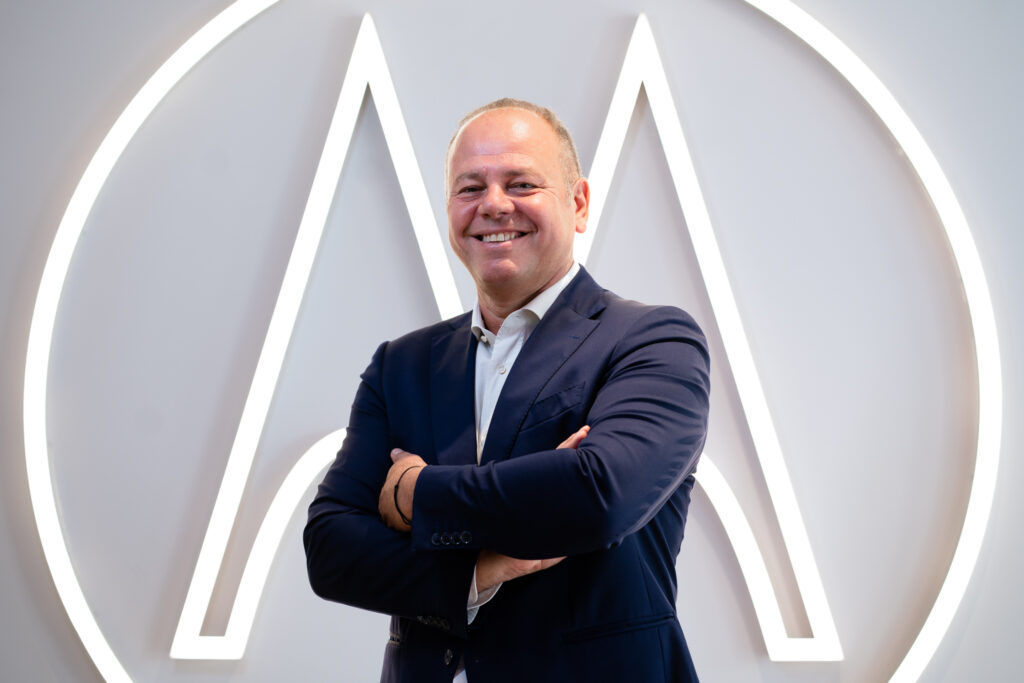

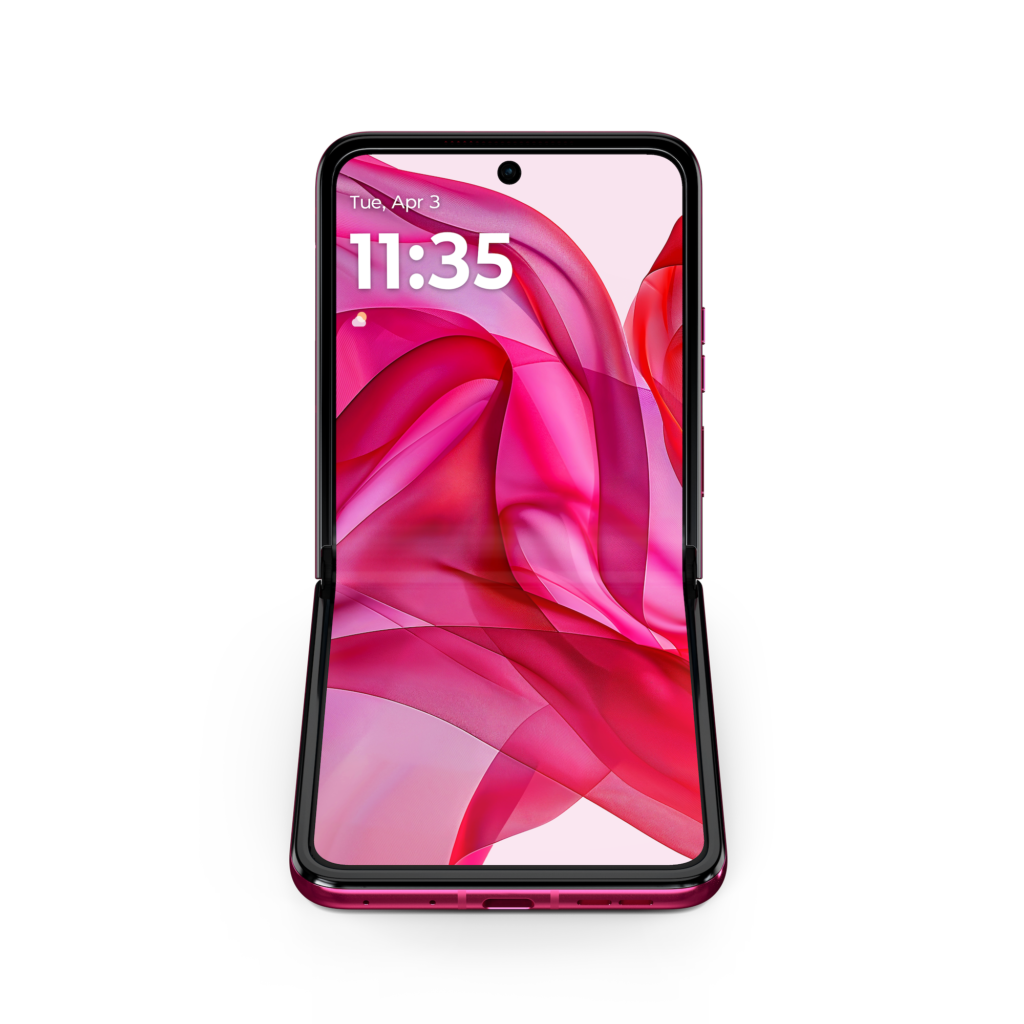
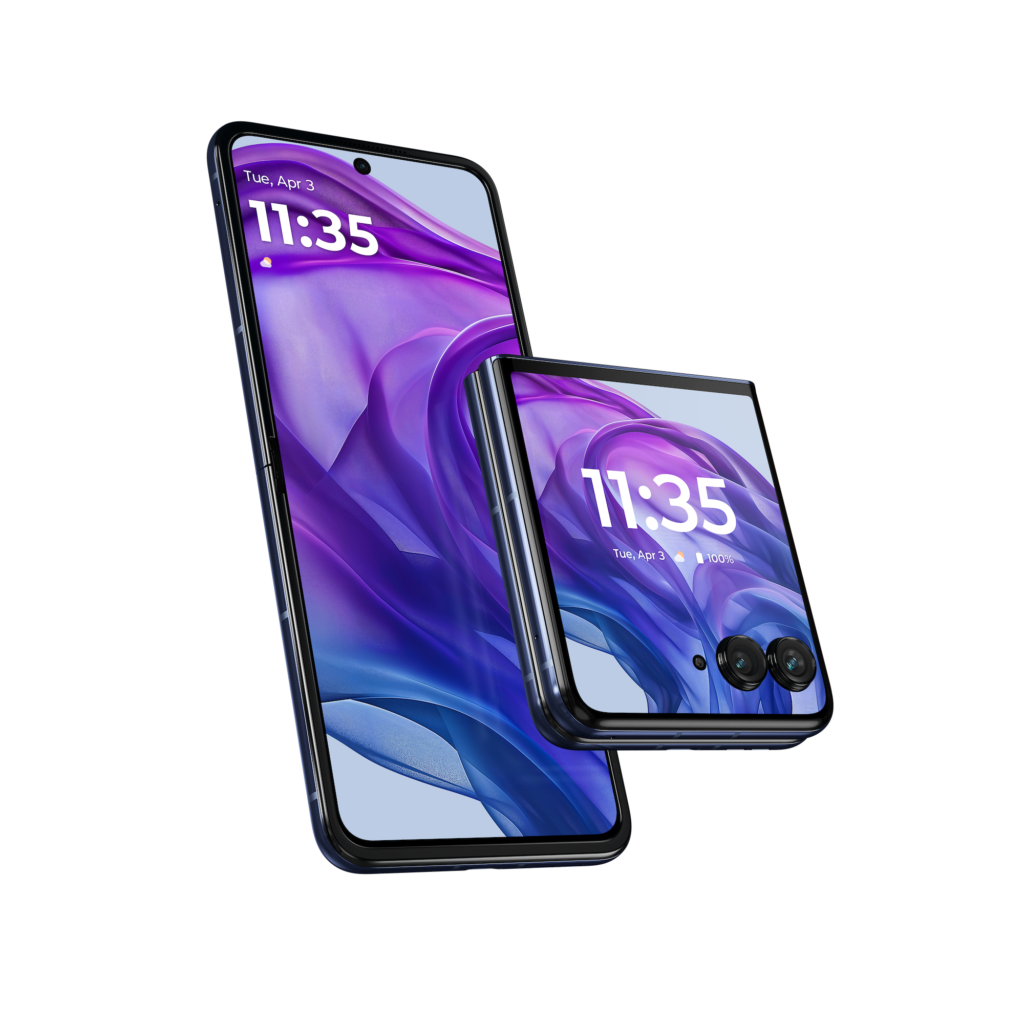




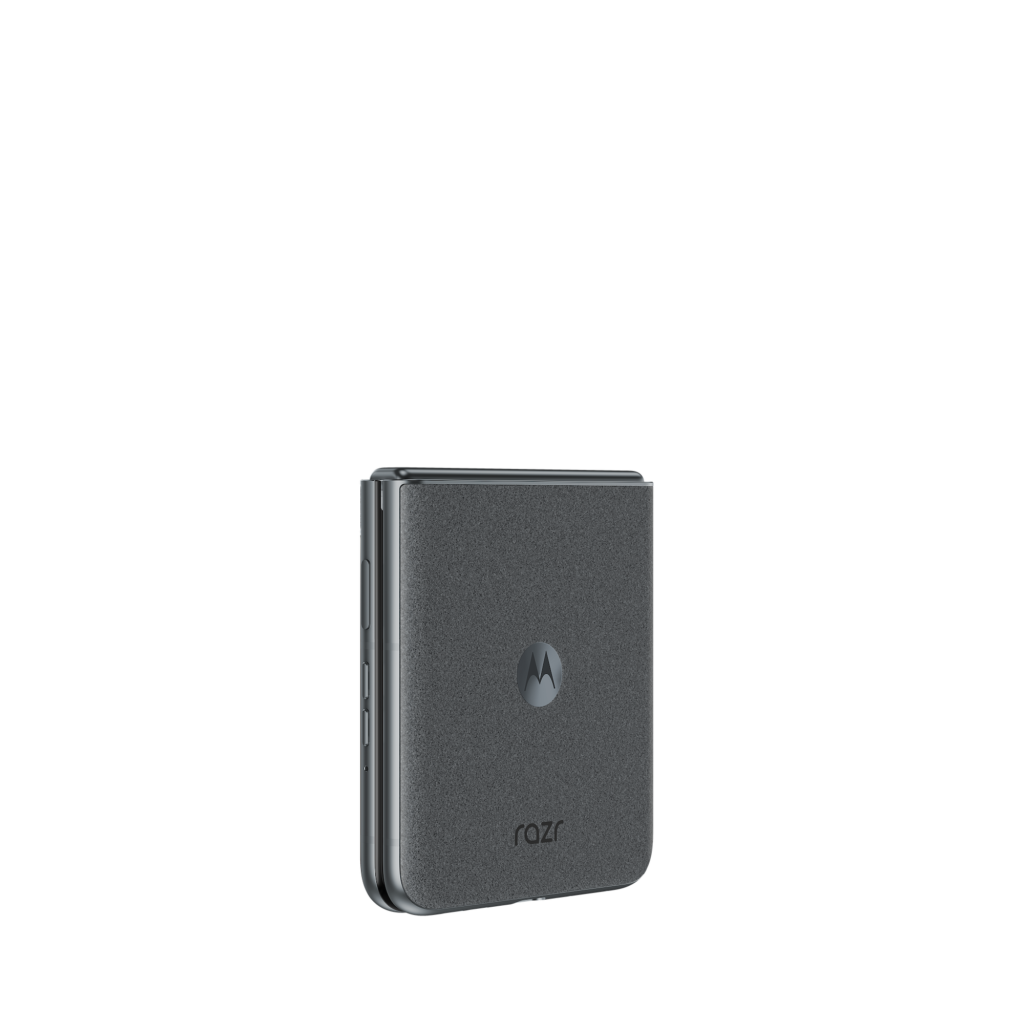

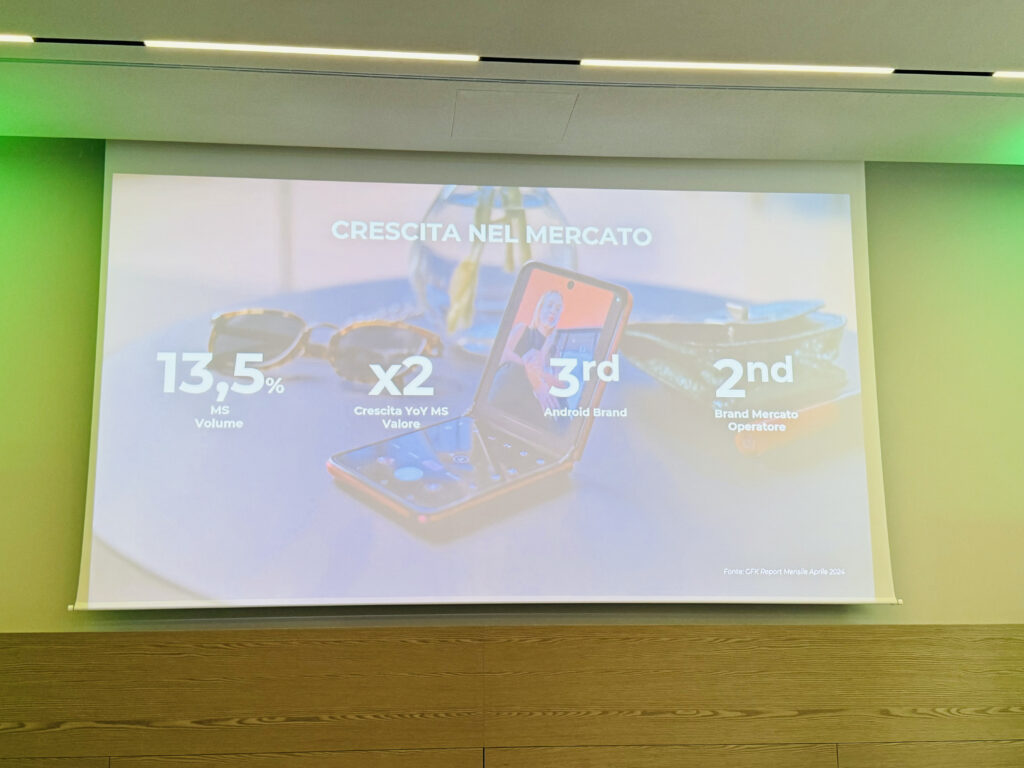
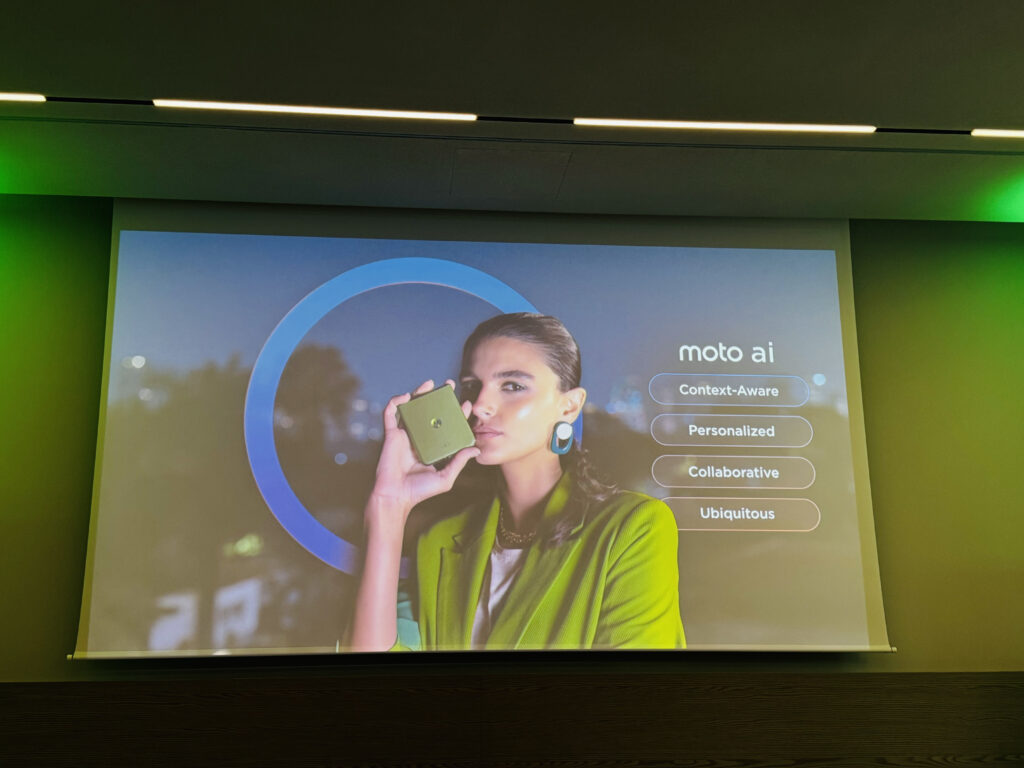

The strengths of the Razr 50 family
The two models are similar in many ways, starting with the abundance of the external screen. Motorola studied how people use folders and discovered an average secondary display time of 75 minutes. The company has increased the screen size to make things easier: 4 inches on the Razr 50 Ultra and 3.6 inches on the Razr 50. This is a noticeable increase compared to previous models (3.6 and 1.5 inches) to help you manage notifications and access your most frequently used applications. It is also quicker to activate Gemini, Google’s AI, whose application is pre-installed on the new Razr (free access to Gemini Advanced for three months), and Google Photos.
In addition, Motorola has also created panels for Spotify and some of its partners, such as Bose, whose panel allows you to manage the volume and other parameters of the headphones and earbuds that you wear. Speaking of GenAI, Motorola is taking on the moment’s challenge with Moto AI, its AI solution that will offer three functionalities in the coming months. Catch Me Up can summarise notifications and personal messages the user receives; Remember Me, which keeps track of information stored via screenshots; and Pay Attention, which transcribes and summarises meetings and lessons recorded on the phone.



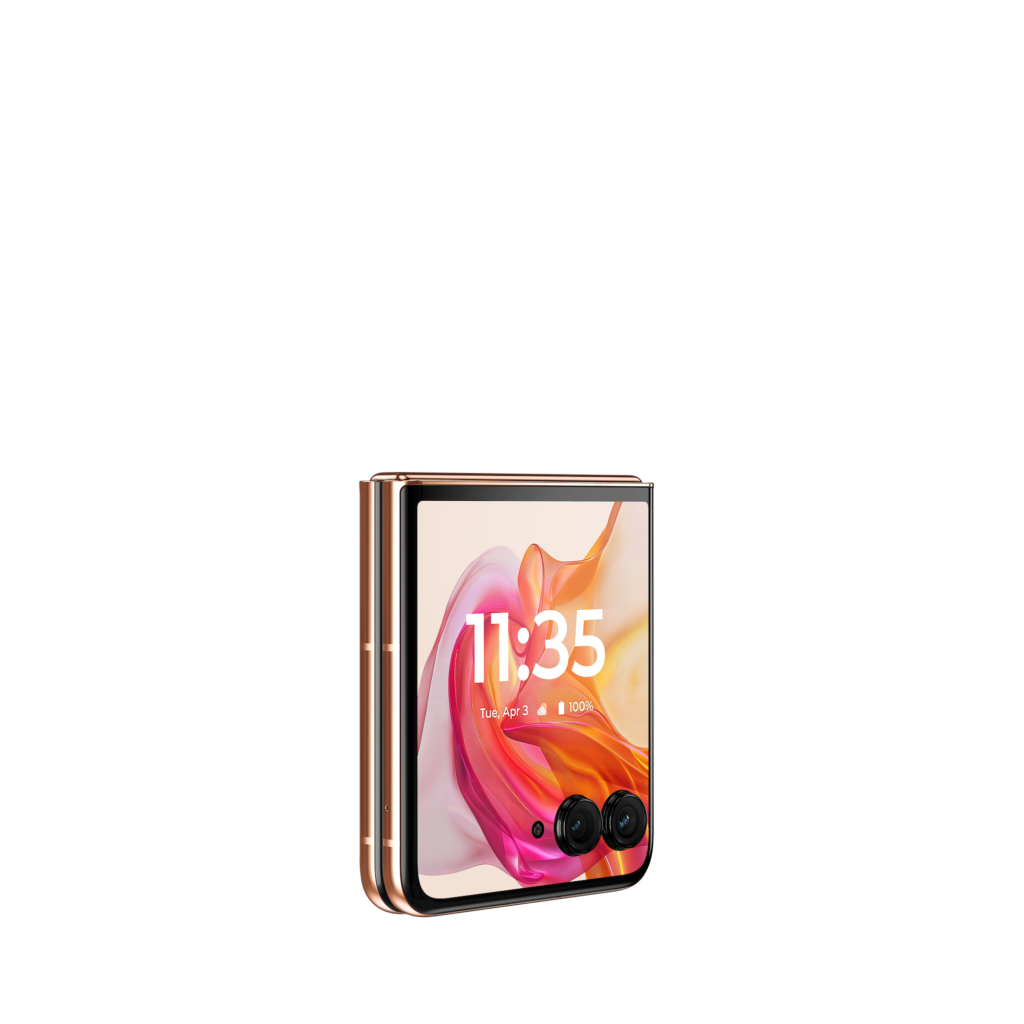


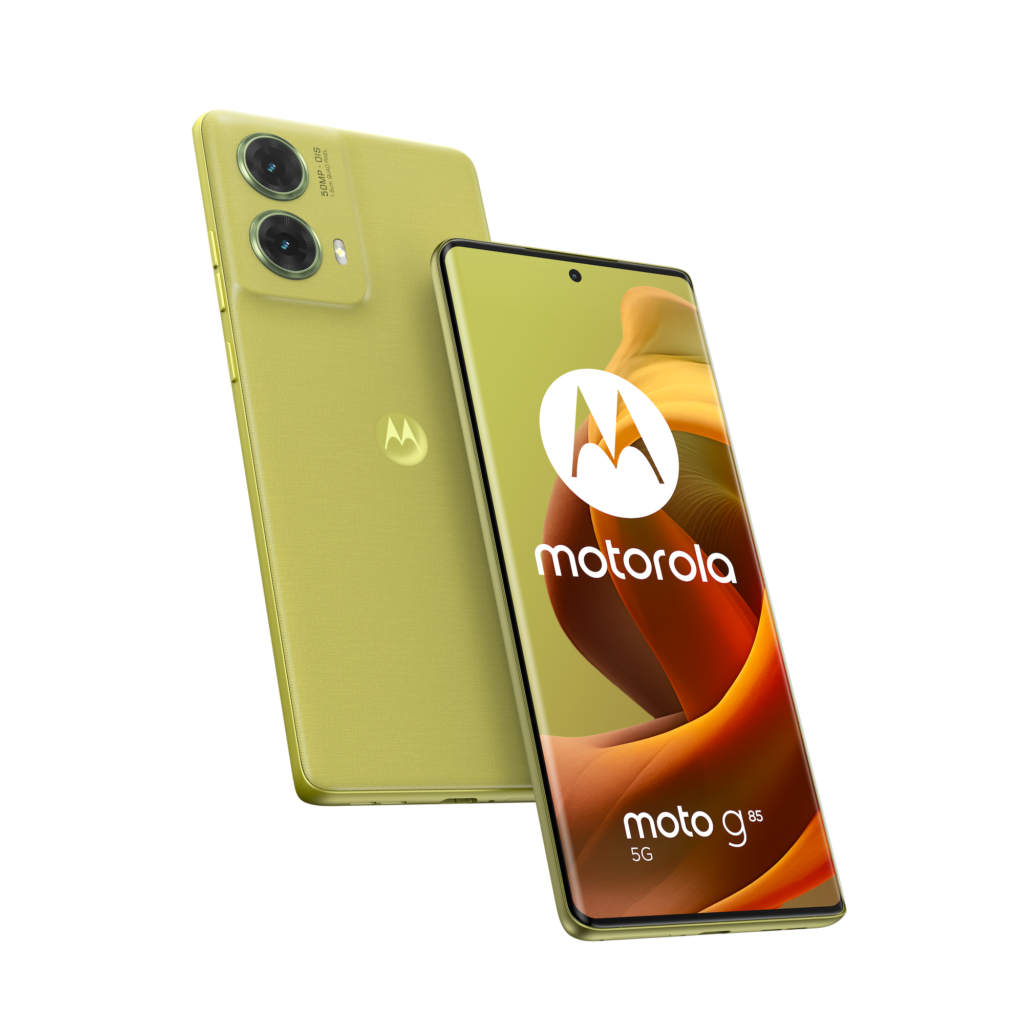

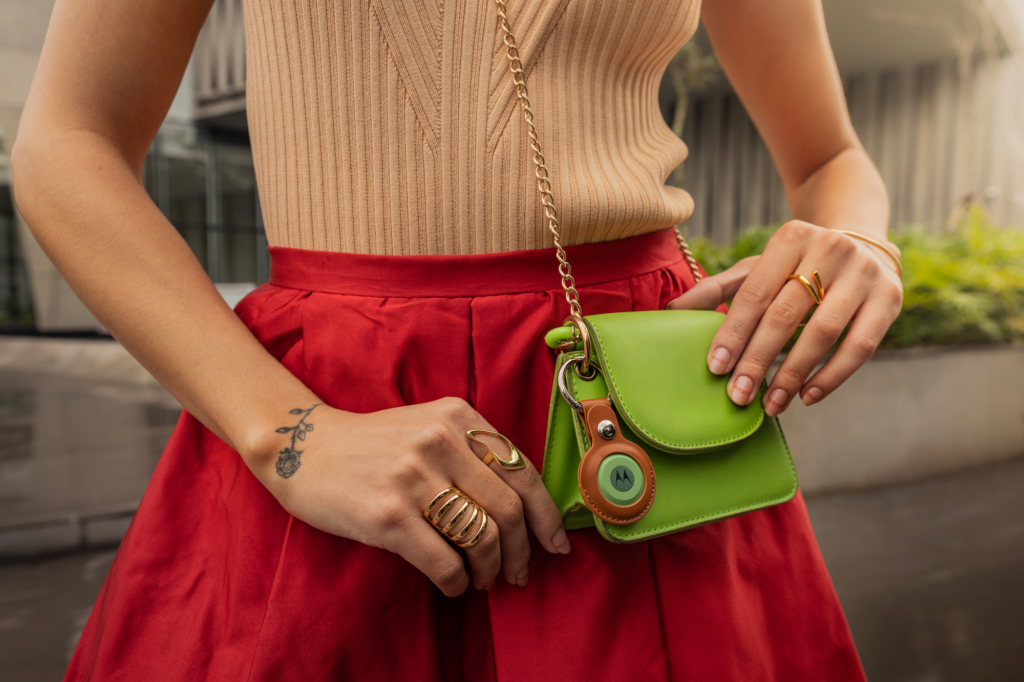
The value of colour
But what really stands out when you look at the new Razr are the colours and the robustness and materials when you pick it up. This is thanks to the use of vegan leather and Motorola’s partnership with Pantone, the company synonymous with colour, which has allowed Motorola to create smartphones with exclusive colours. The Razr 50 Ultra is available in Midnight Blue, Spring Green, Peach Fuzz, and Pink Peacock, which marks a return to the past. This may seem like a trivial detail, but in reality, bright colours go well with the smaller format of the flip phone, seducing a lot of the female audience, who, since the arrival of the foldable, have been the most attentive to the smaller model.
The Razr 50 is available in Beach Sand, Koala Grey and Spritz Orange, which again do not go unnoticed. What is new is that both models have abandoned black in favour of more vibrant colours, which look good up close (I prefer the blue of the Razr 50 Ultra, which is elegant and not too dark). In addition to the charger, the box contains a cover to match the chosen version and a lanyard to attach to the phone so that it can be worn over the shoulder.

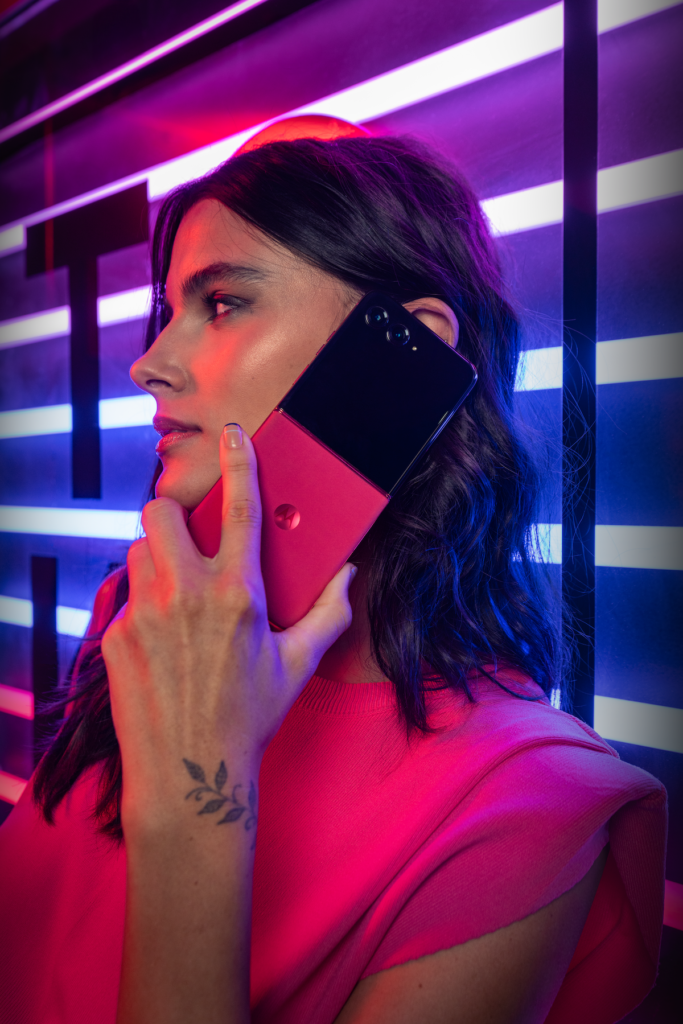
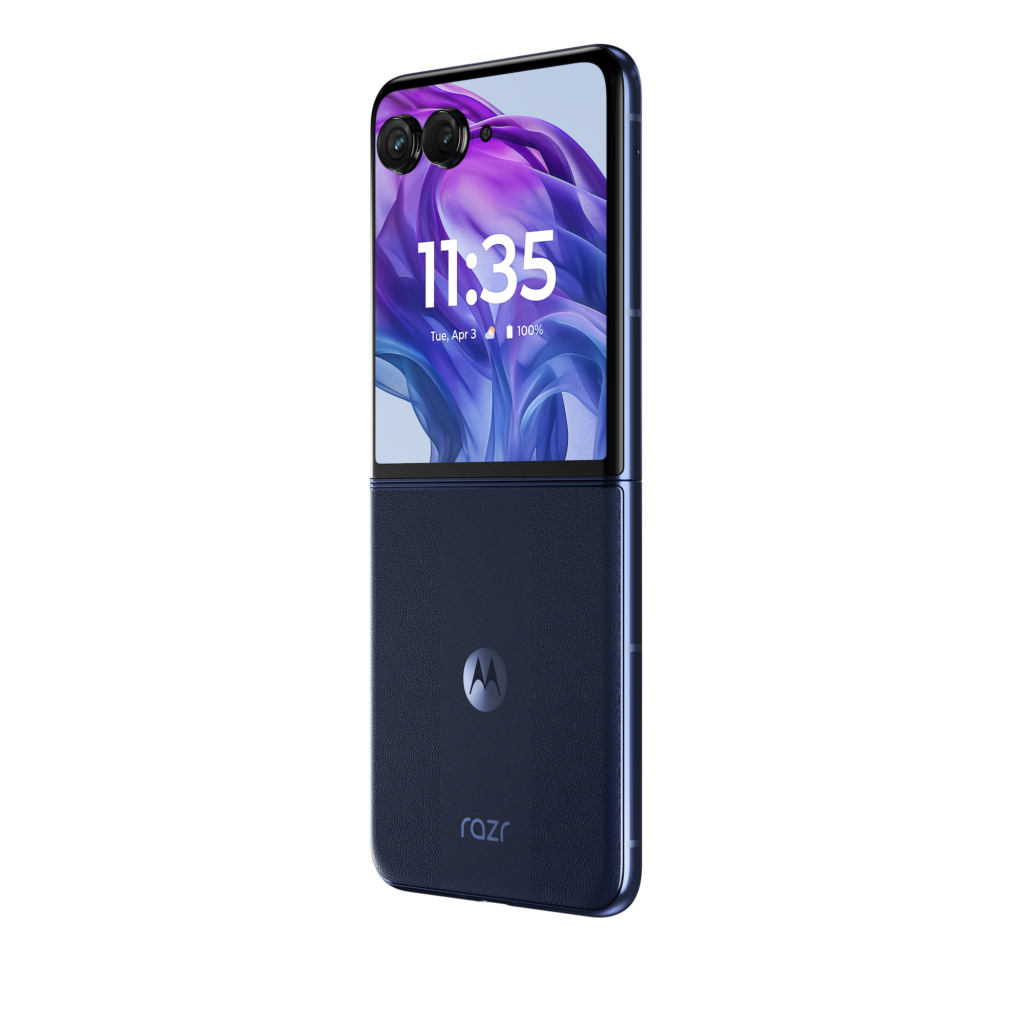


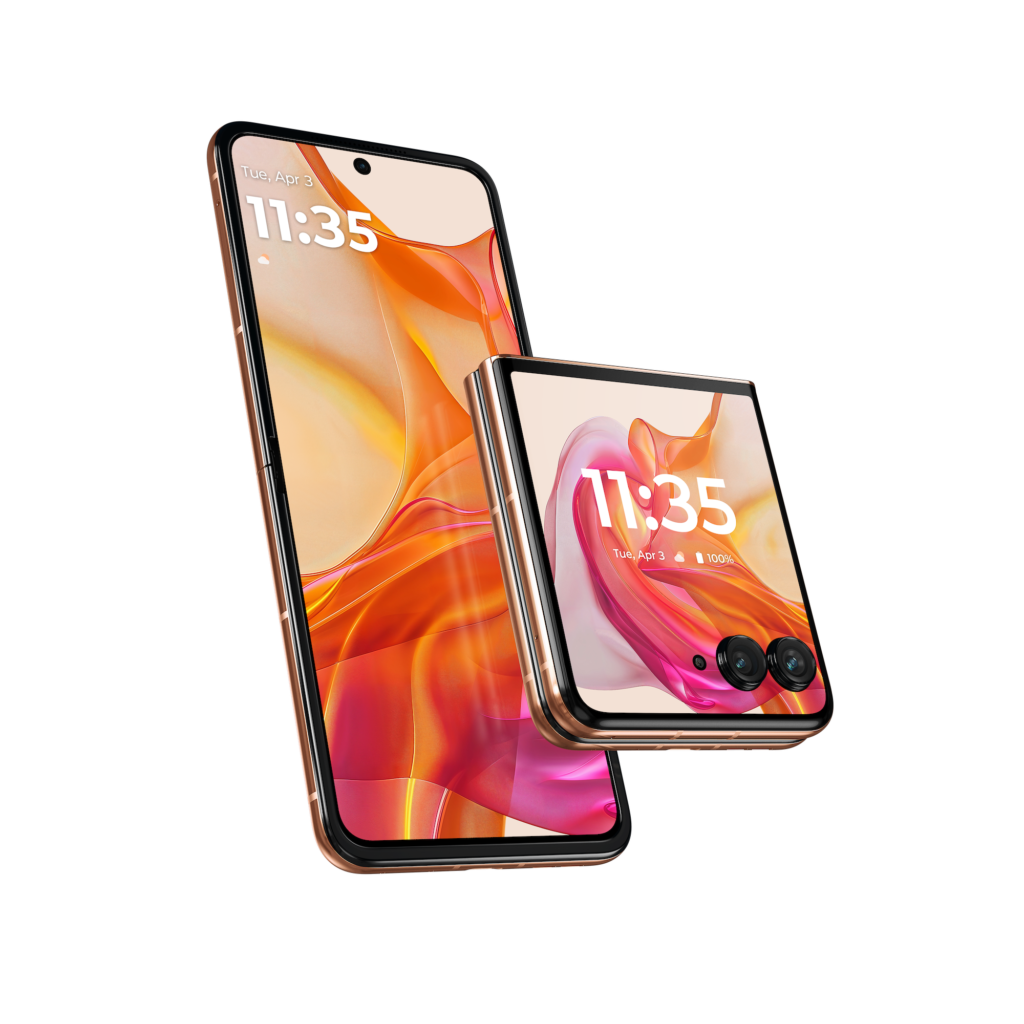
The differences between the two models
Looking at the specifications, the internal display remains a 6.9-inch pOLED panel, with a refresh rate of 165 Hz for the Ultra and 120 Hz for the Razr 50. The processor changes as the Ultra uses the Snapdragon 8S Gen 3, while its smaller brother uses a Mediatek chip. The 50-megapixel main camera is identical, using a Sony sensor, but the Ultra has a 50 MP telephoto lens with 2X zoom for better portraits, while the Razr 50 has a 13 MP ultra-wide angle lens.
The 32 MP front camera is common, as is the Corning Gorilla Glass Victus to protect the external display, while the Razr 50 has a bigger battery: 4200 mAh compared to 4000 mAh on the top of the range. The operating system is Android 14, with 3 OS updates and 4 years of security patches. This is an aspect that Motorola needs to improve in order to increase the longevity of the devices that many manufacturers guarantee to their customers.


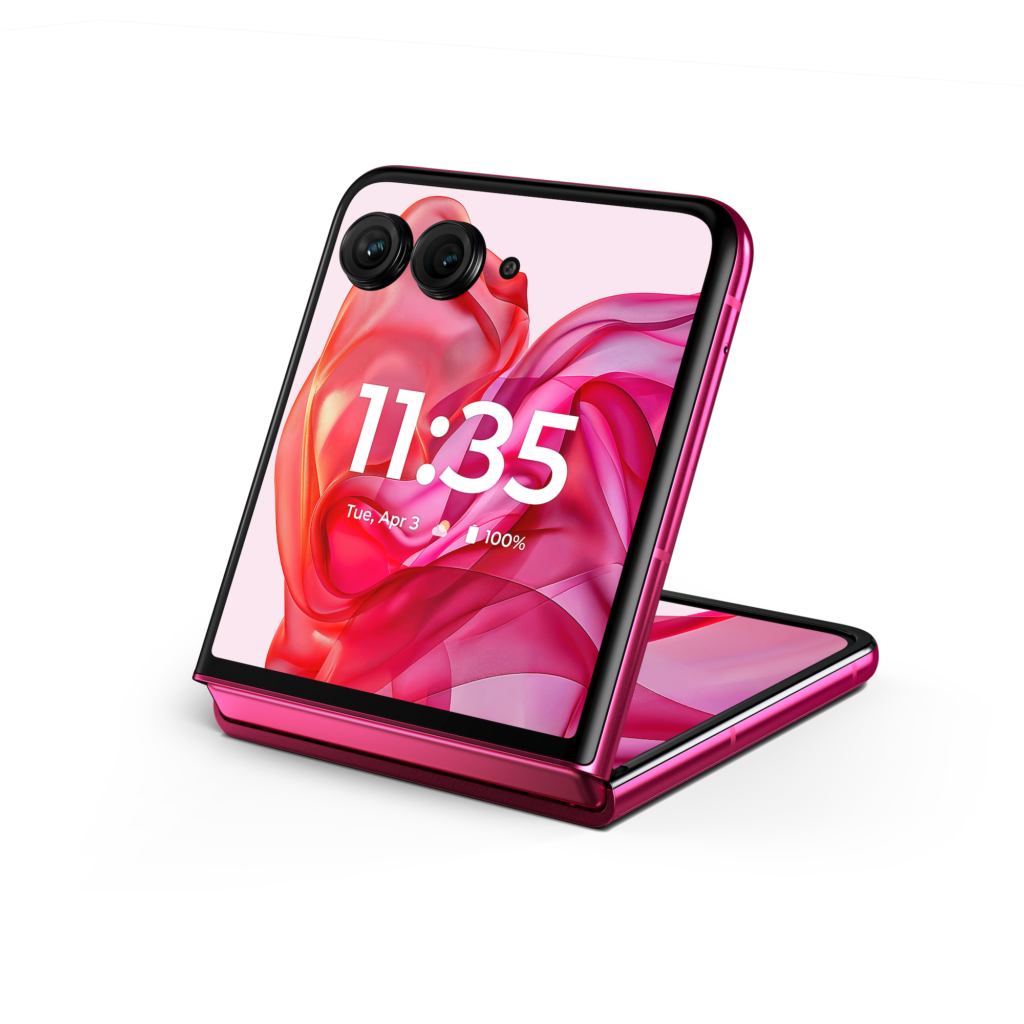
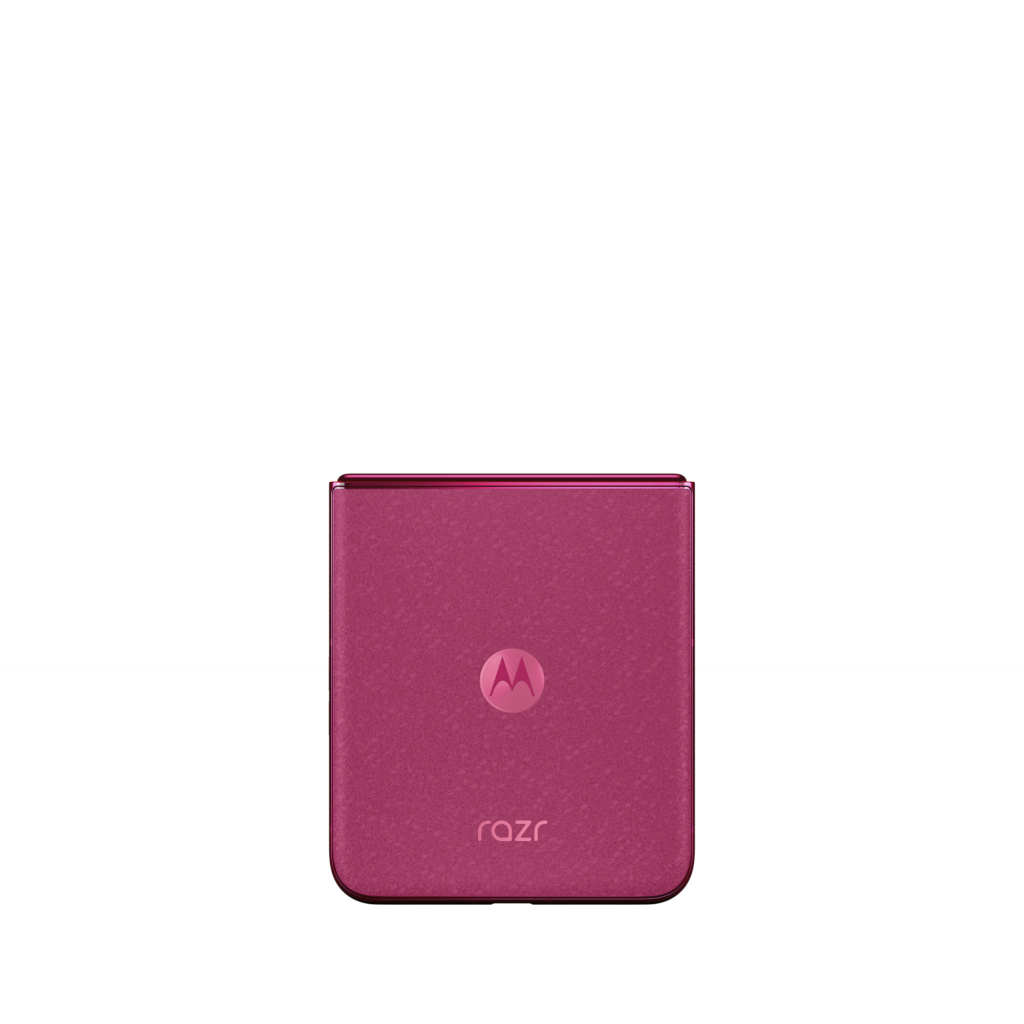


Prices and Moto Tag
The differences between the two models are reflected in different prices: €1,199 for the Motorola Razr 50 Ultra €899 for the Razr 50. The company offers several promotions, including the possibility of receiving free Moto Buds+ earphones and free glass replacement for those who buy the phone before 31 July. As dominant as smartphones are, there is also more to Motorola’s present and future, which has launched Moto Tag. This useful Bluetooth tracker can monitor wallets, keys, luggage and other personal items. Similar in shape and concept to Apple’s Air Tag, they take advantage of Google’s Find My Phone network and Ultra Wideband technology to improve location accuracy. They will be available from the end of July for €39.90.



